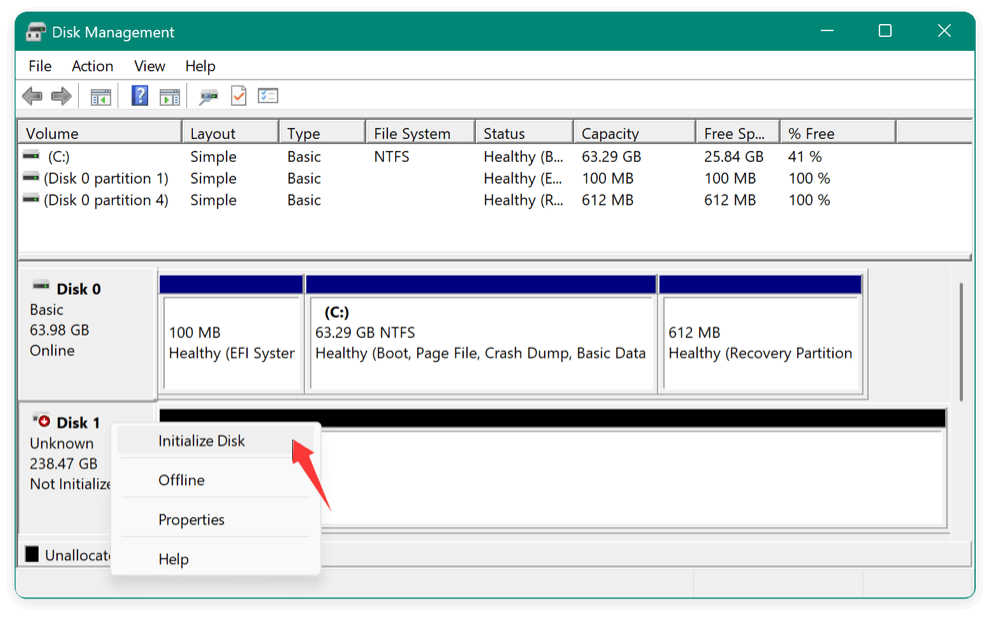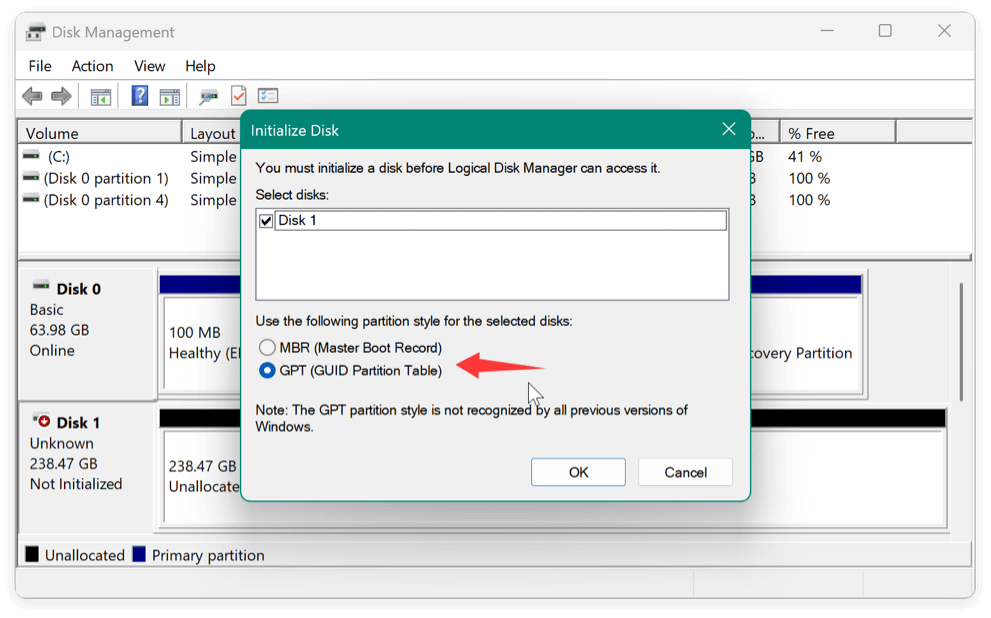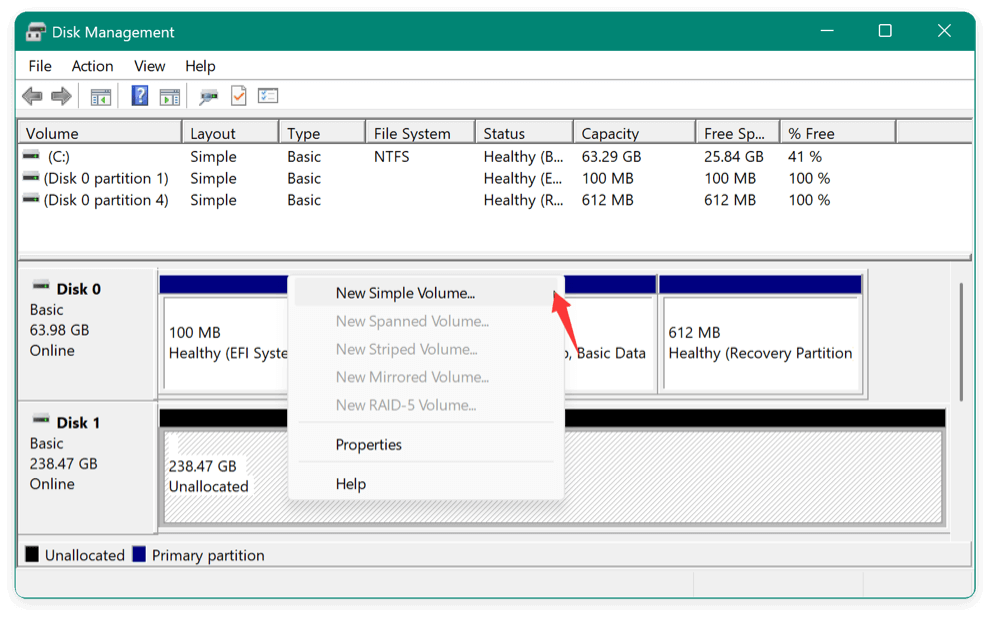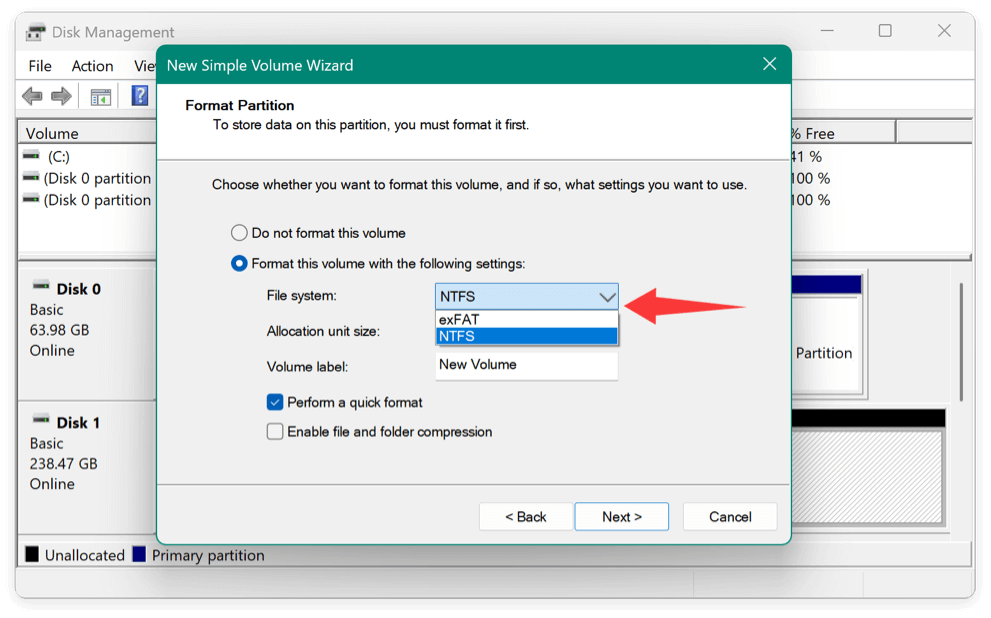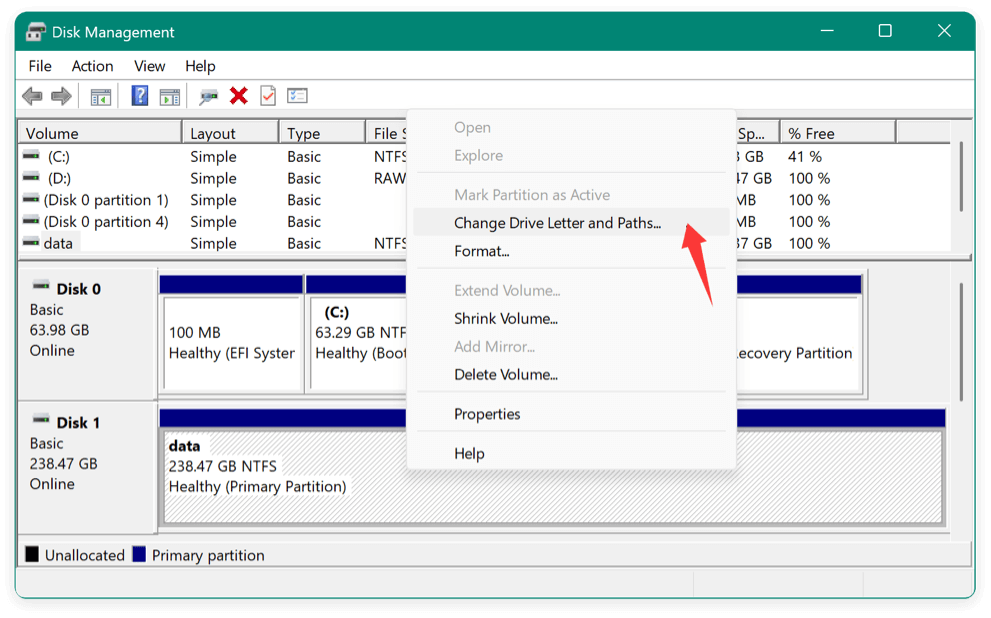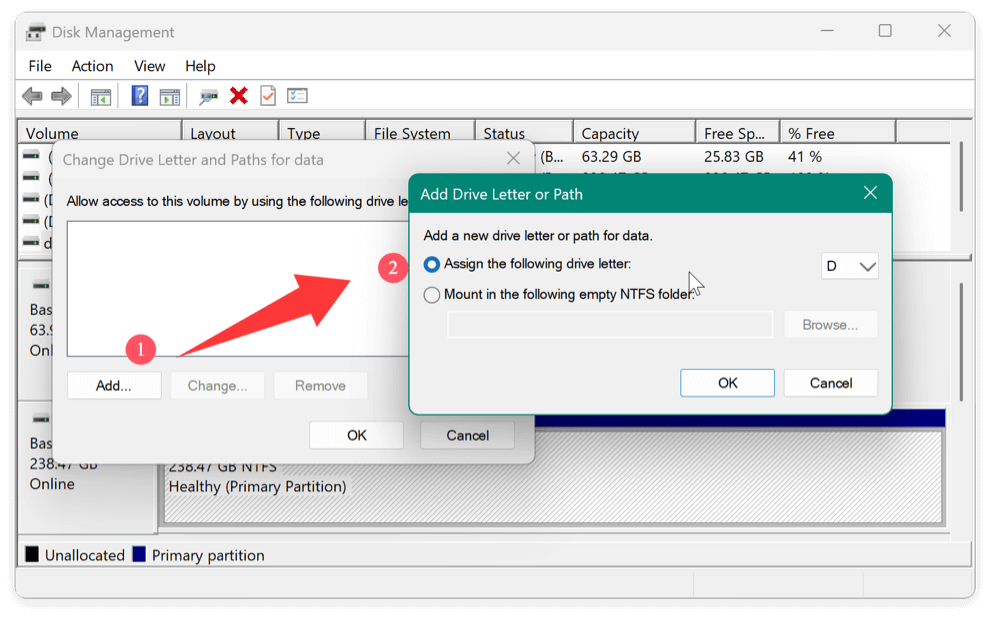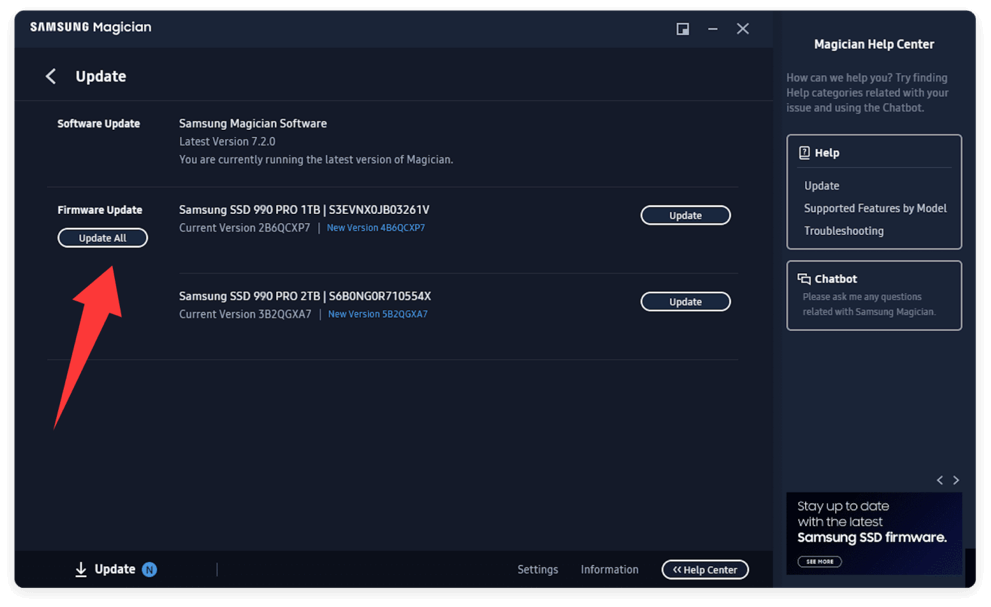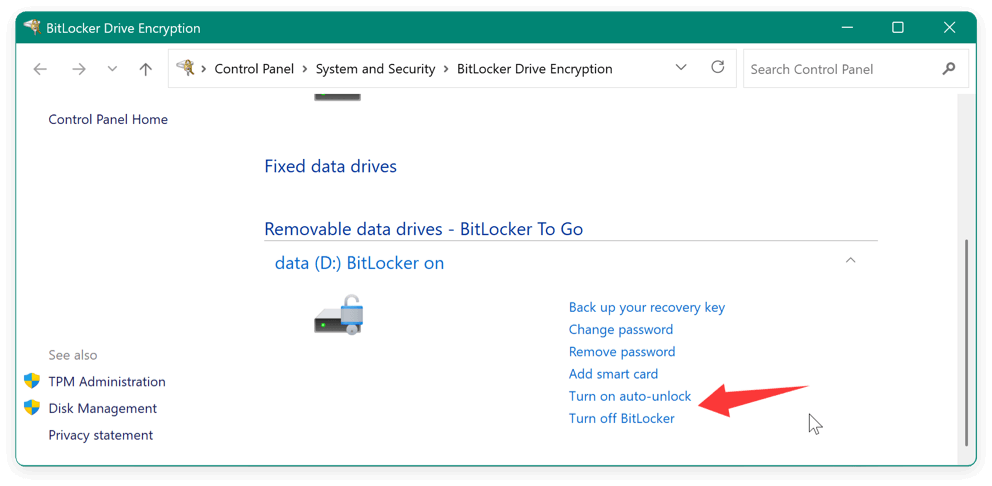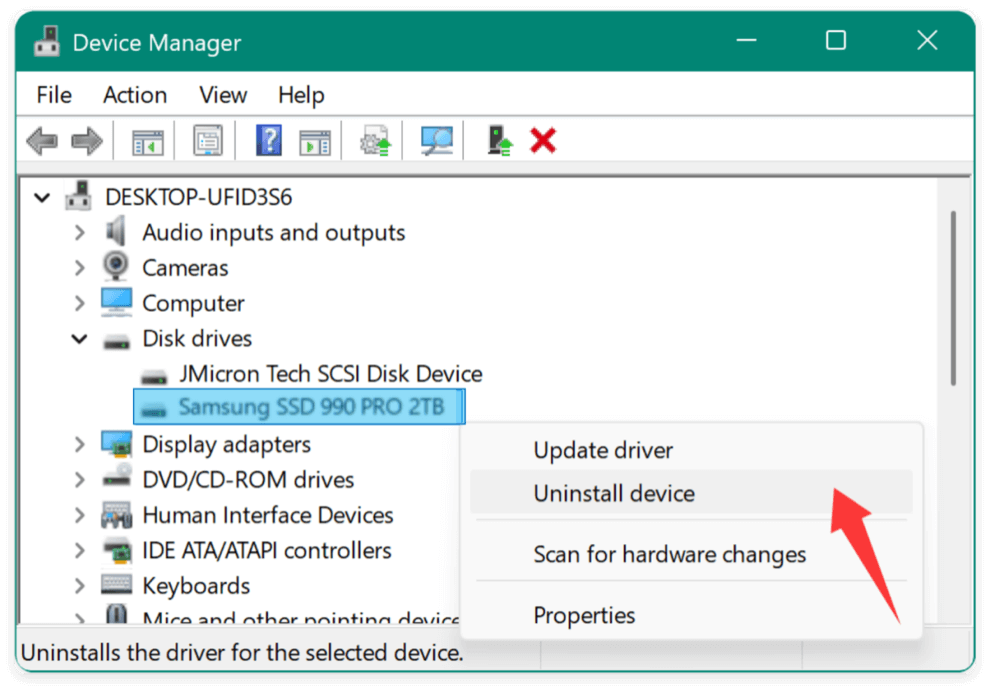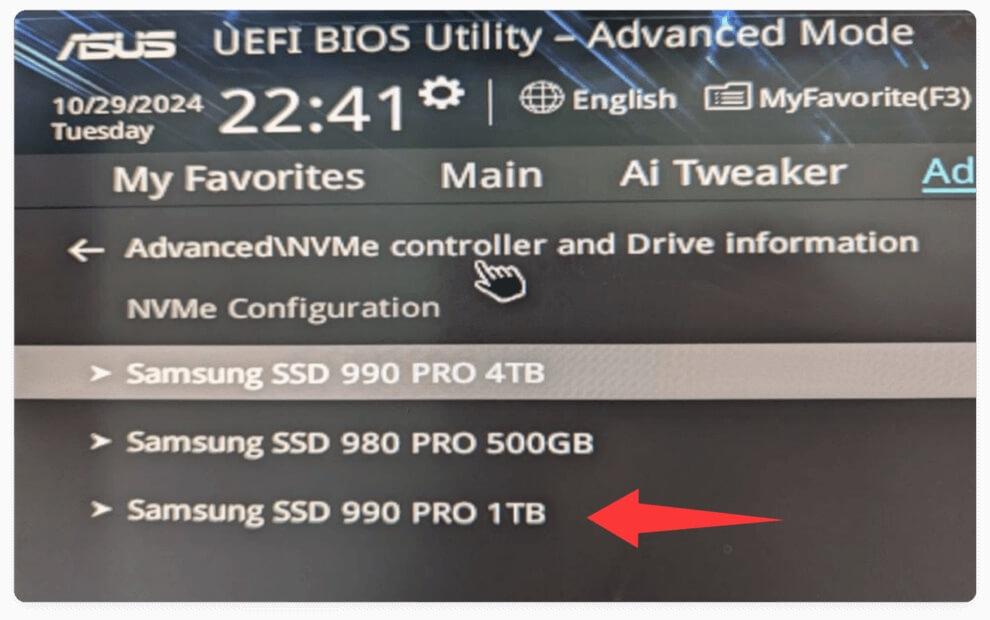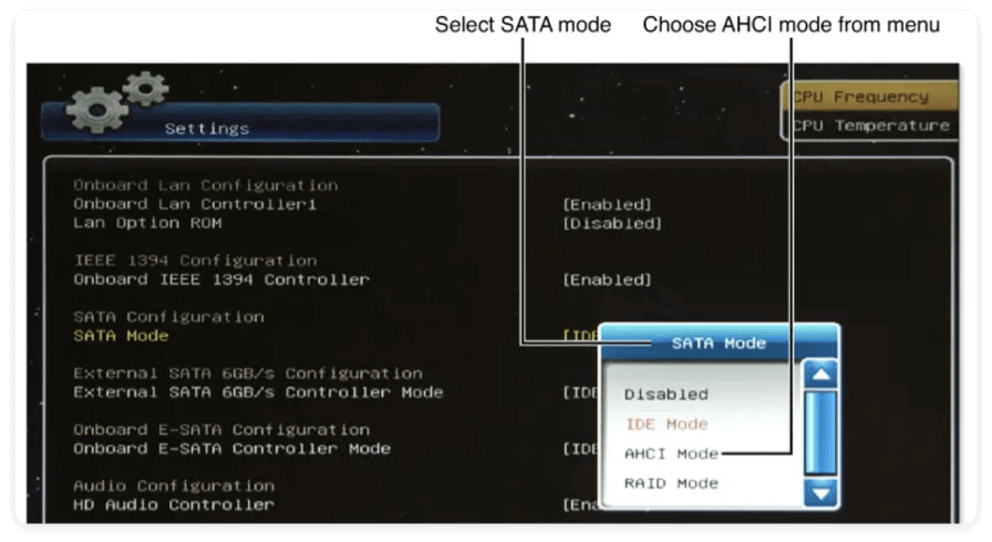Before we start: When Samsung 990 Pro SSD is not showing up, you can first try to recover data with Donemax Data Recovery if there were important files on the drive. The software is effective to recover data from not showing up, unrecognized, inaccessible SSD or other drives.
PAGE CONTENT:
- Why Your Samsung 990 Pro SSD Might Not Be Showing Up
- Fixes for Samsung 990 Pro SSD Not Showing Up in Windows
- Recover Data from Not Showing up Samsung 990 Pro SSD
- Samsung 990 Pro Not Showing Up in BIOS
- When to Suspect Hardware Failure If Samsung 990 Pro SSD Not Showing Up
- Tips to Prevent Samsung 990 Pro SSD Detection Issue in the Future
- Conclusion
The Samsung 990 Pro SSD is one of the most advanced NVMe SSDs on the market, praised for its blazing-fast read and write speeds, high endurance, and suitability for gaming, professional workloads, and system upgrades. However, like any piece of hardware, it may occasionally run into issues — one of the most frustrating being the Samsung 990 Pro SSD not showing up on your computer.

This article will guide you through all possible causes and step-by-step fixes to resolve the issue, whether you're dealing with a new installation or a drive that suddenly disappeared.
Why Your Samsung 990 Pro SSD Might Not Be Showing Up
Prior moving into solutions, it's essential to understand the common reasons your SSD might not be visible in Windows, macOS, or BIOS:
- Improper connection (loose or faulty M.2 installation).
- Drive not initialized or formatted.
- Missing or outdated storage drivers.
- BIOS not detecting NVMe devices.
- Unallocated partition or corrupted file system.
- Drive letter conflict.
- Firmware compatibility issues.
- Encrypted or hidden volumes.
- Defective SSD or motherboard M.2 slot.
Fixes for Samsung 990 Pro SSD Not Showing Up in Windows
If your Samsung 990 Pro SSD is not showing up in Windows, you can follow the fixes one by one to troubleshoot and fix the issue:
Fix 1. Check the Physical Connection
- Power off your system and unplug it.
- Reconnect the SSD carefully into the M.2 NVMe slot.
- Make sure the SSD is screwed in properly and isn't loose.
- Check for visible damage to the drive or slot.
- If available, try another M.2 slot or a different system.
Fix 2. Initialize SSD and Create Volume inDisk Management
Sometimes, your SSD is installed correctly but isn't showing up because it hasn't been initialized or assigned a drive letter.
- To choose Disk Management, press Win + X.
- Look for a disk labeled "Unknown" or "Not Initialized."
- Right-click and choose Initialize Disk.
![Samsung 990 Pro SSD not showing up]()
- Select GPT (for UEFI systems) or MBR (for legacy BIOS).
![Samsung 990 Pro SSD not showing up]()
- After initialization, choose New Simple Volume by right-clicking the unallocated space.
![Samsung 990 Pro SSD not showing up]()
- Assign a drive letter and format the drive (NTFS or exFAT) by following the instructions.
![Samsung 990 Pro SSD not showing up]()
Fix 3. Assign or Change Drive Letter for the SSD
Drive letter conflicts can cause your SSD to remain invisible in File Explorer. Or if the SSD is already initialized but has no letter, right-click it and select "Change Drive Letter and Paths."
- Open Disk Management.
- Locate the SSD with no letter.
- Right-click > Change Drive Letter and Paths.
![Samsung 990 Pro SSD not showing up]()
- Add or change the drive letter and click OK.
![Samsung 990 Pro SSD not showing up]()
Fix 4. Update SSD Drivers
Windows may not recognize the SSD if the NVMe or chipset drivers are outdated.
Update Samsung NVMe Driver:
- Visit Samsung's support page and download the Samsung NVMe Driver.
- Install and restart your PC.
Update Chipset and Storage Drivers:
- Go to the website of the manufacturer of your motherboard.
- Download the latest chipset, SATA, and NVMe controller drivers.
- Install and reboot.
Fix 5. Use Samsung Magician Software
Samsung Magician is a diagnostic and firmware tool that provides key information about your SSD.
- Download and install Samsung Magician.
- Open the app to check if the SSD is detected.
- If detected:
- View drive health, temperature, and performance data.
- Check for firmware updates and install them.
![Samsung 990 Pro SSD not showing up]()
If the SSD is not detected by Samsung Magician, it may not be communicating with your system at all — indicating a BIOS or hardware issue.
Fix 6. Unhide or Unlock the SSD
If the drive is encrypted with BitLocker or a third-party tool, it may not mount automatically.
- Open Control Panel > BitLocker Drive Encryption.
- Look for the encrypted SSD and unlock it with your recovery key. Or click Turn on auto-unlock feature.
![Samsung 990 Pro SSD not showing up]()
You can also use the manage-bde - unlock command in CMD to check BitLocker status.
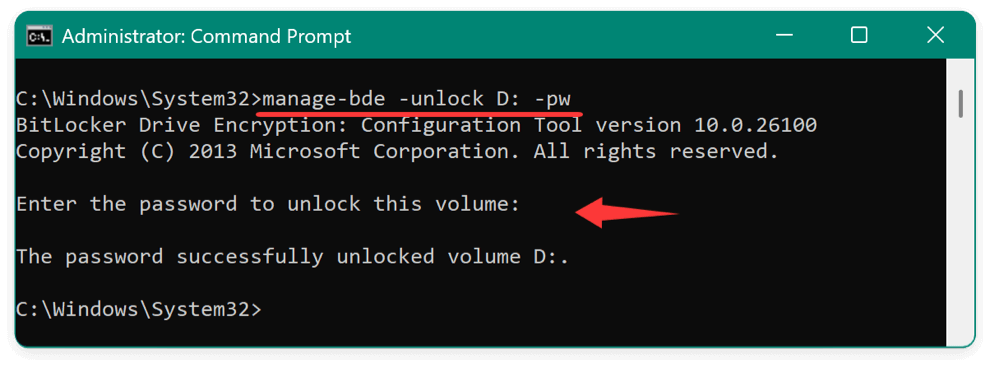
Fix 7. Uninstall and Reinstall Device in Device Manager
- Right-click Start > Device Manager.
- Expand Disk Drives.
- Right-click your Samsung 990 Pro (if listed) > Uninstall Device.
![Samsung 990 Pro SSD not showing up]()
- Reboot your PC — Windows should automatically reinstall the correct driver.
Recover Data from Not Showing up Samsung 990 Pro SSD
If the Samsung 990 Pro SSD not showing up issue cannot be fixed by the above methods, you can still try to recover the important files from the drive if the it can be detected in Disk Management.
To recover the data in such a case, you need to use a reliable data recovery software. Donemax Data Recovery can help you recover the data if the drive is not showing up. You can download and have a try:
Donemax Data Recovery
- Trusted data recovery software for any data loss scenarios.
- Supports data recovery for SSD, HDD, SD card, USB flash drive, etc.
- Easy-to-use and fast to recover deleted/lost files.
Connect the Samsung 990 Pro SSD to the computer and ensure it's detected. Then run the software Donemax Data Recovery and follow the steps to recover data:
Step 1. The software will list all the detected drives on the computer. Check and select the Samsung 990 Pro SSD which is not showing up.
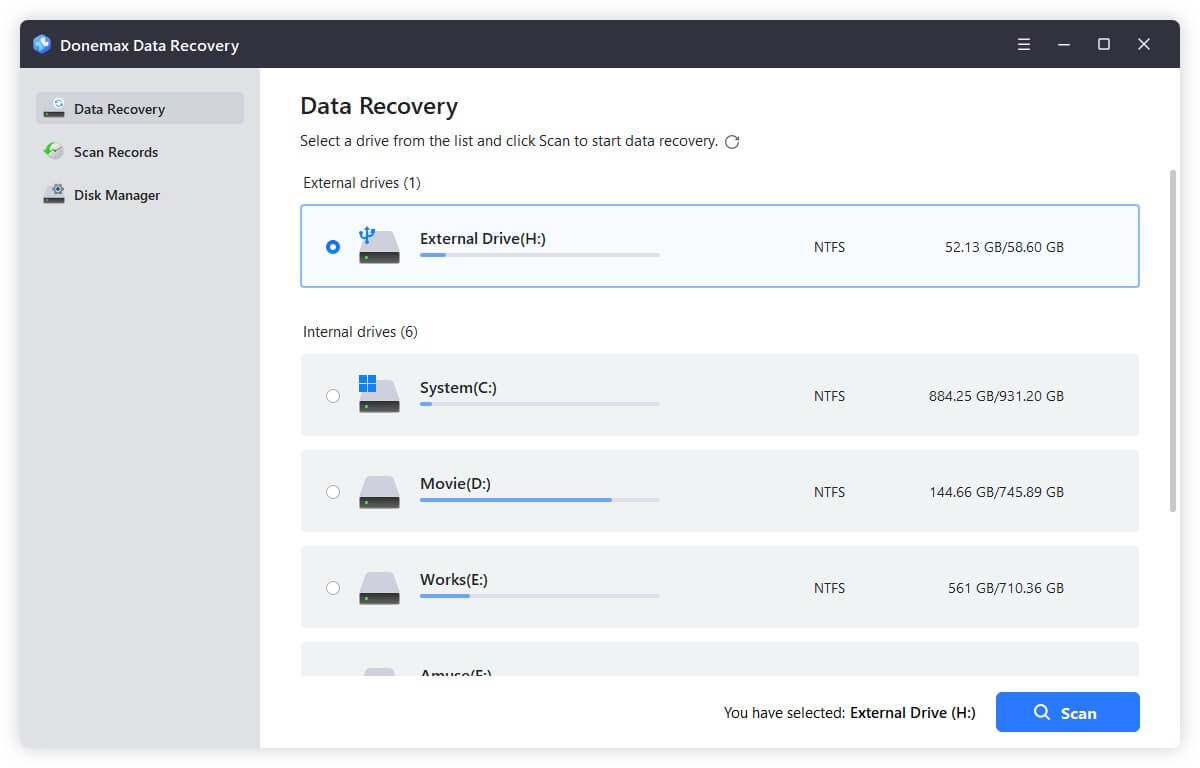
Step 2. Click the Scan button to search for files from the drive. It will take a while and just wait patiently.
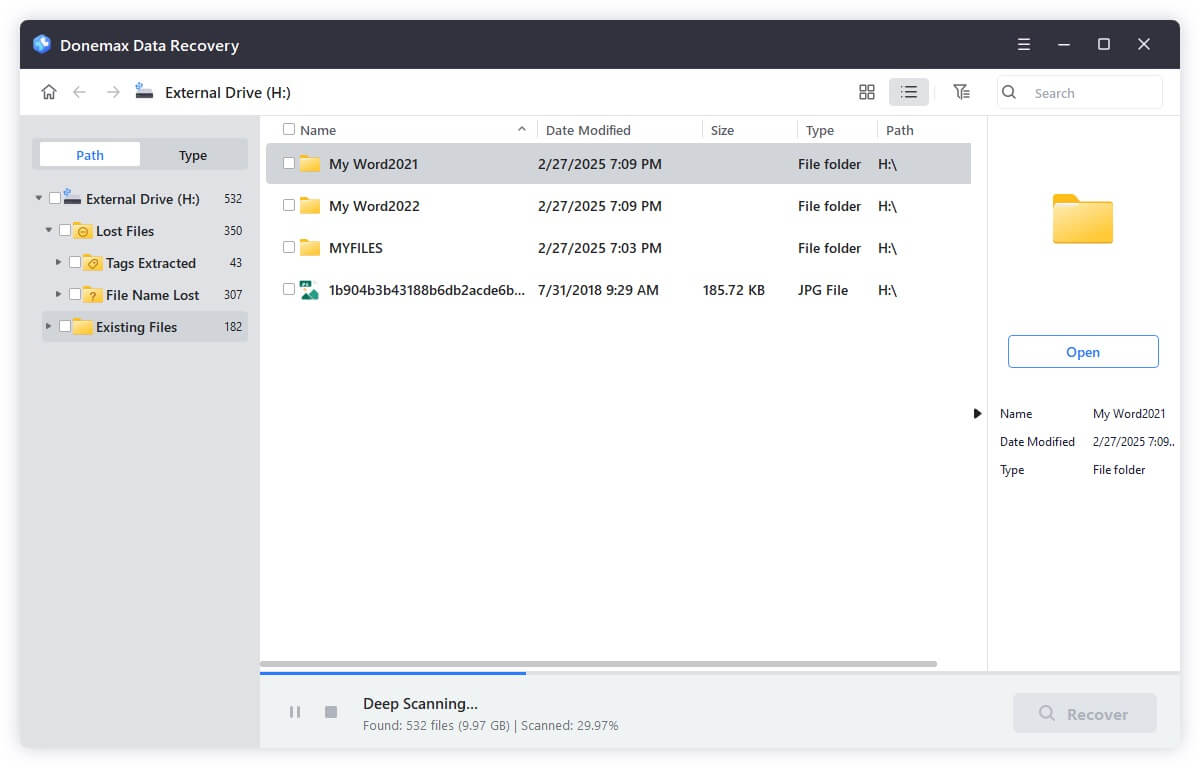
Step 3. After the scanning process is finished, all the found files will be listed. Check and preview the files to locate the wanted files. Save the files to another drive.
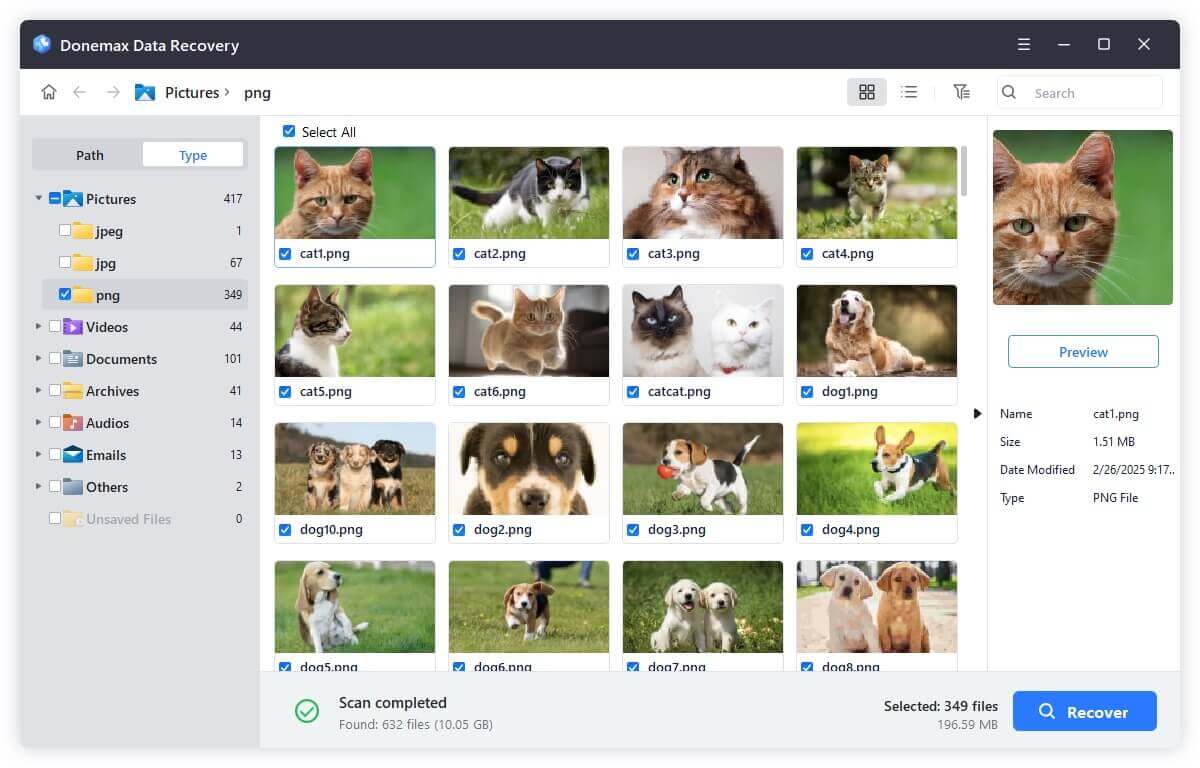
Samsung 990 Pro Not Showing Up in BIOS
If your Samsung 990 Pro SSD isn't showing up in the BIOS/UEFI, it means your system isn't detecting the hardware at a foundational level — before the operating system even loads. This is a more serious issue than simply missing in File Explorer or Disk Management, and it often points to a hardware conflict, BIOS misconfiguration, or a compatibility problem.
Here's how to diagnose and resolve it:
Fix 1. Confirm Your Motherboard Supports NVMe M.2 SSDs
Not all M.2 slots are created equal. Some support SATA-based M.2 SSDs, while others support PCIe NVMe-based SSDs, and some support both.
Check your motherboard manual or specifications online to determine:
- Which M.2 slots support PCIe Gen4 x4 NVMe (required for Samsung 990 Pro's optimal performance).
- Whether using a certain M.2 slot disables SATA ports or other PCIe lanes (common in mid-range motherboards).
💡 Tip: If you insert an NVMe SSD into a SATA-only M.2 slot, it will not show up at all.
Fix 2. Enable NVMe or Storage Detection in BIOS
In most modern BIOS/UEFI systems, NVMe detection is automatic, but some systems may require manual configuration.
Steps:
- Reboot your PC and press the BIOS key (usually DEL, F2, or ESC) during startup.
- Navigate to the Storage Configuration or Advanced tab.
- Look for options like:
- NVMe Configuration
- M.2_1/M.2_2 Mode – set to Auto or PCIe.
- Hot Plug Support – enable if present.
- If you see your Samsung 990 Pro listed here, you're in good shape — the SSD is detected by the BIOS
![Samsung 990 Pro SSD not showing up]()
If it's missing:
- Try resetting the BIOS to default settings.
- Disable Fast Boot (this sometimes bypasses NVMe initialization).
- Check if Secure Boot or CSM (Compatibility Support Module) is causing detection issues (disable one or the other to test).
Fix 3. Set SATA Mode to AHCI
Although AHCI is not used directly by NVMe drives (they use their own protocol), some motherboards have storage mode settings that influence how storage devices are initialized.
Steps:
- Go to the BIOS Advanced > SATA Mode setting.
- Change it from RAID or IDE to AHCI.
- Save and reboot.
![Samsung 990 Pro SSD not showing up]()
This can sometimes trigger the correct NVMe initialization sequence on boot.
Fix 4. Update BIOS Firmware
If your motherboard is a few years old, it might not support newer PCIe Gen4 SSDs like the Samsung 990 Pro out-of-the-box — even if the M.2 slot is physically present.
- Visit your motherboard manufacturer's website.
- Search for the latest BIOS/UEFI firmware updates.
- Follow the instructions carefully — most motherboards support flashing via USB using a tool like Q-Flash, EZ Flash, or BIOS Flashback.
- After updating, recheck BIOS for NVMe detection.
⭐ Caution: A failed BIOS update can brick your motherboard. Only update if you're comfortable doing so or seek help from a professional.
Fix 5. Use a PCIe Adapter or External Enclosure (for Testing)
If all else fails and the drive doesn't show up in BIOS:
- Try placing your SSD in a PCIe M.2 adapter card.
- Or use a USB 3.1/3.2 NVMe enclosure to connect it externally to another PC.
If the SSD is recognized externally or in another system, the problem likely lies with your motherboard or its firmware — not the SSD.
Fix 6. Clear CMOS/Reset BIOS
Sometimes, a corrupted BIOS setting or misconfiguration can prevent NVMe devices from initializing correctly.
- Power off your PC and unplug it.
- Use the Clear CMOS jumper or remove the CMOS battery for 10–15 seconds.
- Reinsert the battery or reset the jumper.
- Power on and re-enter BIOS.
This will reset all settings to factory defaults and can often resolve strange detection issues.
Fix 7. Verify Power and Thermal Considerations
Though NVMe SSDs don't require separate power cables, they can overheat or fail to initialize if:
- Your motherboard doesn't provide stable power to the slot.
- The SSD is installed without a heatsink or in a poorly ventilated area.
The Samsung 990 Pro includes advanced thermal control, but when used in cramped cases or under GPU heat zones, it may throttle or fail to initialize until it cools down.
When to Suspect Hardware Failure If Samsung 990 Pro SSD Not Showing Up
If your SSD isn't recognized in multiple systems and fails to show up in BIOS or Samsung Magician, it could be a case of:
- Factory defect.
- Power surge damage.
- Heat-induced failure.
How to test:
- Insert the SSD into another PC.
- Use an external M.2 NVMe USB enclosure (with thermal support).
- If still undetected, request a warranty replacement.
Samsung SSDs typically have a 5-year limited warranty, and you can initiate a return or RMA through their official Support Portal.
Tips to Prevent Samsung 990 Pro SSD Detection Issue in the Future
- Always safely eject SSDs before unplugging external enclosures.
- Keep firmware up to date using Samsung Magician.
- Avoid exposing the drive to excessive heat or power fluctuations.
- Periodically back up critical data to avoid data loss from sudden hardware failure.
- Use ESD protection when installing or removing the SSD.
Conclusion
The Samsung 990 Pro SSD not showing up can be caused by a wide range of issues — from a simple formatting problem to a hardware malfunction. The key is to follow a systematic approach:
- Start with physical and BIOS-level checks.
- Move to Disk Management and software-level troubleshooting.
- Use tools like Samsung Magician and DiskPart.
- Test for drive or slot failure with alternate systems or enclosures.
By following the steps in this guide, most users can get their SSD recognized and working without needing professional repair. If the problem persists despite trying every fix, contacting Samsung for a replacement is the logical next step.


Donemax Data Recovery
One of the best data recovery programs to recover deleted, formatted or lost data from PC, Mac, HDD, SSD, USB drive, SD card, camera, RAID, Sever or other storage devices.
Related Articles
- Dec 25, 2024Unable to Delete Files from External Hard Drive on Mac? 6 Solutions
- Dec 23, 20248 Solutions to Fix the 'com.apple.diskmanagement.disenter error 53249' on Mac
- Jun 20, 2025Mac Dock Getting Stuck or Frozen, How to Fix It?
- Jan 12, 20255 Solutions to Fix Disk is Unreadable on Mac
- Dec 18, 2024How to Fix a USB Drive Read-Only on Mac? [8 Solutions]
- Jan 17, 2025Fusion Drive Appears as Two Drives in Finder: How to Fix It on Mac?

Christina
Christina is the senior editor of Donemax software who has worked in the company for 4+ years. She mainly writes the guides and solutions about data erasure, data transferring, data recovery and disk cloning to help users get the most out of their Windows and Mac. She likes to travel, enjoy country music and play games in her spare time.

Gerhard Chou
In order to effectively solve the problems for our customers, every article and troubleshooting solution published on our website has been strictly tested and practiced. Our editors love researching and using computers and testing software, and are willing to help computer users with their problems
Hot Donemax Products

Clone hard drive with advanced clone technology or create bootable clone for Windows/Mac OS.

Completely and easily recover deleted, formatted, hidden or lost files from hard drive and external storage device.

Certified data erasure software - permanently erase data before selling or donating your disk or any digital device.

